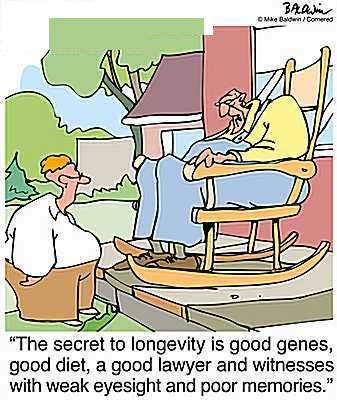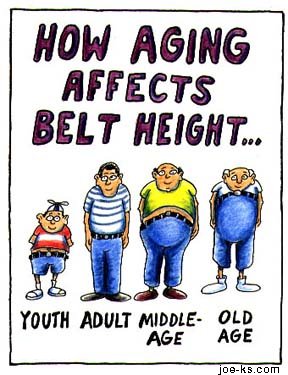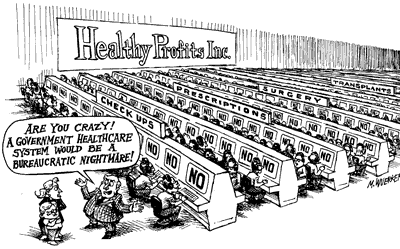By Walter Sorochan, Emeritus Professor, San Diego State University
Posted January 01, 2011 Updated October 12, 2021. Disclaimer
| What is insurance? Insurance is providing protection to someone who is at future risk of catastrophic illness, disease, injury or death or loss of property. Should they get sick or have an accident, then their insurance coverage or premium would provide money or compensation to allow them to regain their previous state of being. This being able to regain their former state is referred to as indemnity. |
Cost: Cost of an insurance policy is determined by comparing numerous actuarial factors like age, frequency of disease, injury, accident, length or age of the policy, factors increasing risk, etc., in the general population and then calculating the probability of such a happening. The greater the number of persons in the population pool, the less the cost of the premium. This is the key: the size of the population pool lowers the cost of the risk.
For example: The cost of requiring medical care for a person with cancer is difficult to estimate. But depending on the kind of cancer, the expenses of medical treatment, for example, can be well over $ 100,000 over a period of just one to two months. The expenses are for cancer specialists, therapy and hospital care. This expense of $ 100,000 is an amount that most persons do not have available as immediate cash!
 So how does health insurance help out? If the cancer patient in our example was covered by an health insurance policy, then the insurer, private or government, would pay for the incurred expenses. The patient would probably pay a small co-payment for each visit to the doctor or hospital. The insurer [ insurance company ] would absorb most if not all the expenses of cancer therapy.
So how does health insurance help out? If the cancer patient in our example was covered by an health insurance policy, then the insurer, private or government, would pay for the incurred expenses. The patient would probably pay a small co-payment for each visit to the doctor or hospital. The insurer [ insurance company ] would absorb most if not all the expenses of cancer therapy.
In order for cancer therapy insurance to work, the patient, while in a healthy state, would have had to get the health care insurance policy before getting sick or being diagnosed with cancer. The healthy person would pay a small premium each month or year for the high cost health insurance coverage. Depending on the age, risk and other health-environmental risk factors, the insurance experts or actuarians would calculate the amount of the premium. The calculation of risk of getting cancer is spread over to all the other persons in the population pool.
The concept of insurance is that the losses of a few are made good by contribution from many. It is based on the law of large numbers. The risk of one or a few are shared by the many. And the more persons sharing the risk, in turn, results in lowering the cost of the risk to the few at risk. For example, the premium cost for 100,000 persons in the insurance pool [ coverage of those sharing the risk ], say $ 500 a month. is much higher than for one million persons, probably $ 200 a month, in the pool. And the insurance cost of $ 29 a month for a pool of 100 million persons is dramatically lower than for either the 100,000 or 1 million persons in the population pool. The cost of risk, spread to the population pool database, determines the cost of the premium policy or insuring the risk.
Most private insurance companies, like Blue Shied or Blue Cross, have a small number of persons in the risk pool and hence, the premium costs tend to be extremely high, as compared to Kaiser Permanente with a much larger population pool. Although there may be many small and medium sized private insurance companies competing for persons to insure, their population pool is much smaller than a national single payer population pool for a country.
The main concept of insurance --- that of spreading risk --- is the basis of all insurance. Insurance is defined as the equitable transfer of the risk of a loss, from one entity to another, in exchange for a premium, and can be thought of a guaranteed small loss to prevent a large, possibly devastating loss. An insurer is a company selling the insurance. The insurance rate is a factor used to determine the amount, called the premium, to be charged for a certain amount of insurance coverage. Insurance or assurance, is a device for indemnifying or guaranteeing an individual against loss. The risk of loss is spread to a multi-aged population pool over a long period of time. The bigger the risk pool the lesser the cost of insuring a risk.
Now you should be able to understand why the cost of health care in a single payer insurance provider like the countries of Sweden, England, Canada and France cost less than the health care in United States. These countries have single provider coverage for health care referred to as universal health care.
Insurance is available for all aspects of life. You are probably most familiar with auto and home-fire insurance. Since most persons drive a car and are mandated by law to have state automobile insurance, let us look at how auto insurance works. Your insurance carrier provides you with auto coverage based on various risks:
your driving record
your age
physical condition & age of your car
living/driving in dangerous environmental area
size [ number persons ] of your carrier pool
amount & kind of liability coverage
Here is a rough example of how your insurer determines your risk and the amount of your auto premium:
the older your car, the less redeemable value it has, the less you pay
the more speeding & parking tickets you have, the more you pay
the more stolen vehicles in your area, the more you pay
the more miles you drive, the more you pay
if you are between 15 and 25 years of age, the more you pay
size of all your liability risk
Now let us look at the risks for health insurance:

the older you get [ probability of dying ], the more you pay
work in hazardous environment, you pay more
have genetic predisposition to disease, you pay more
are obese, you pay more
smoke cigarettes, you pay more
don't exercise, you pay more
have high cholesterol level, you pay more
have diabetes, you pay more
have cancer, you pay more
have cardiovascular disorders, you pay more
have autoimmune disorders, you pay more
have allergies, you pay more
visit the doctor a lot, you pay more
have less than high school education, you pay more
eat high fat diet, you pay more
drink alcoholic beverages, you pay more
more severe disability, you pay more
Here is an example of incentives to encourage losing weight and not smoking by employers
Although there are many risks in determining the cost of your insurance premium, the bottom line is the size of your database pool. You want the “LARGE numbers coverage.” The more persons covered in your pool, the smaller will be your premium costs and visa versa.
Spins on Available health Care
Unfortunately, the information provided by health care providers is not always forthcoming nor correct. Many insurance sellers, disguise information in their commercial advertising web-sites, by masking to portend to give accurate information. Instead, they often distort the information by spinning the information on their web-sites. Another example, in MSN Money section, October 30, 2008, the information provided minimizes or omits mentioning the concept of "BIG NUMBERS!" as one of the best ways of getting affordable health care insurance coveage.
Here is a good explanation of insurance and how it works:
 Insurance (including health) is all about spreading risks.
Insurance, whether health, life, or disability, is used to take your individual
risks and spread over a large number of people and a longer period of time.
Insurance (including health) is all about spreading risks.
Insurance, whether health, life, or disability, is used to take your individual
risks and spread over a large number of people and a longer period of time.
A recent statistic estimated that 50% of health care costs are preventable or the result of lifestyle choices. Lung Cancer and Diabetes are two of the mostly costly illnesses to treat and a large percentage are due to smoking and the epidemic of obesity.
Government sponsored or Single Payer health care would be better. There are pro's and con's to every system. Ultimately, the only thing that will reduce health and medical expenses is if people collectively take better care of themselves.
Other good health insurance links:
health insurance & Obamacare information
Obamacare Fixes Runaway Insurance Companies
Cost effective medical care system solution for United States
References:
Actuarial Period Life Table 2004 Life table
Beattie, Andrew, The History of Insurance, History Insurance
Cigarette Smoking Mortality: smoking mortality
Disability Insurance Payment Table, Disability table
Fulmer Melinda, " Get paid to lose weight," MSN Money, October 30, 2008. Article by Fulmer, "reduce costs" is no longer active.
Social Security Disability History, Soc sec history
Thomasson, Melissa. "Health Insurance in the United States". EH.Net Encyclopedia, edited by Robert Whaples. April 18, 2003. Article by Thomasson,Hea Ins USA is no longer active.
Zeckhauser Jack, Insurance, The Concise Encyclopedia of economics. insurance economics